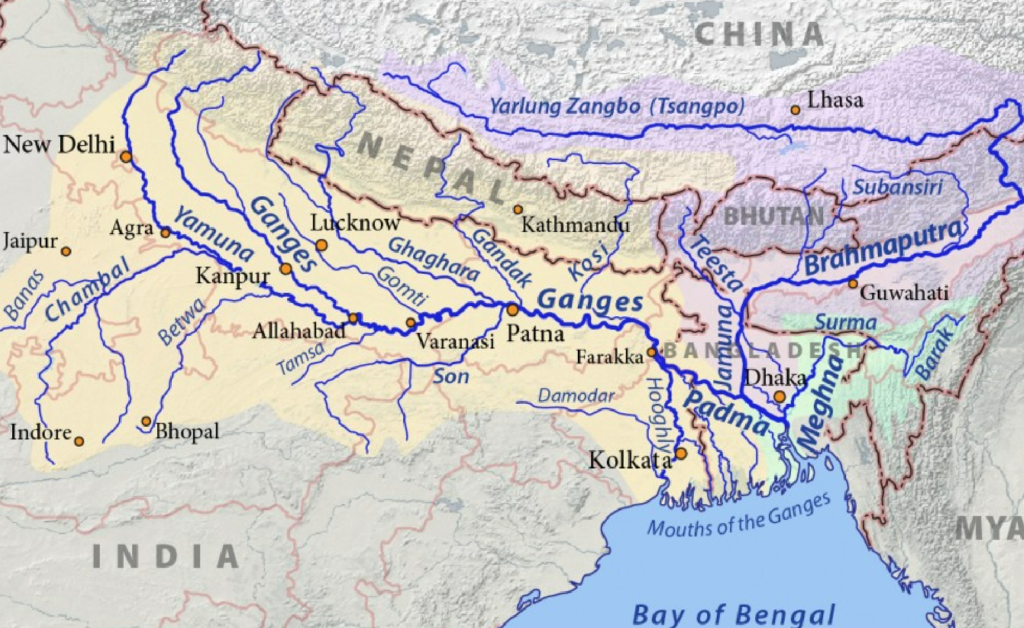Famous Himalayan Rivers and Their Origins
Details on the Himalayan rivers, including where they begin and where they eventually terminate:
Ganges: The Ganges is a trans-boundary river that begins its journey at the Gangotri Glacier in the state of Uttarakhand in India. It travels for approximately 2,525 kilometres before emptying into the Bay of Bengal in the country of Bangladesh. Over four hundred million people in India and Bangladesh depend on the river as their primary source of drinking water.
Indus: The Indus River is another trans-boundary river that flows through India, Pakistan, and Afghanistan before emptying into the Arabian Sea. Its headwaters are located on the Tibetan Plateau, which is a part of the Himalayas, and it travels for approximately 3,180 kilometres before reaching the Arabian Sea. The river serves as an important source of water for a variety of industries and agricultural pursuits in the area.
Brahmaputra: The Brahmaputra River is a trans-boundary river that flows through China, India, and Bangladesh before emptying into the Bay of Bengal. Its source is in Tibet. The river’s length is approximately 2,900 kilometers, and it ranks ninth among all rivers in the world in terms of the amount of water it discharges.
Sutlej: The Sutlej River has its headwaters in Tibet and travels all the way down through India and Pakistan before it finally empties into the Arabian Sea. The river’s length is approximately 1,550 kilometers, and it serves as an important water supply for agricultural endeavours in the area.
Yamuna: The Yamuna River is a tributary of the Ganges and begins its journey as a glacial outflow from the Yamunotri Glacier in the Indian state of Uttarakhand. After winding its way through northern India for approximately 1,376 kilometers, the river finally meets up with the Ganges in Allahabad.
Chenab: The Chenab River is a tributary of the Indus River and begins its journey at the Bara Lacha Pass in the state of Himachal Pradesh, India. Before it eventually meets up with the Indus River, the river travels approximately 960 kilometres through India and Pakistan.
Kosi: The Himalayas in Nepal are the source of the Kosi River, which flows into the Ganges and is a tributary of that river. Before flowing into the Ganges at Farakka, the river travels approximately 730 kilometres through Nepal and India on its way to India.

These rivers are necessary for the people and ecosystems of the Himalayan region, and it is essential for the region’s continued sustainable development that their management and conservation be carried out effectively.





